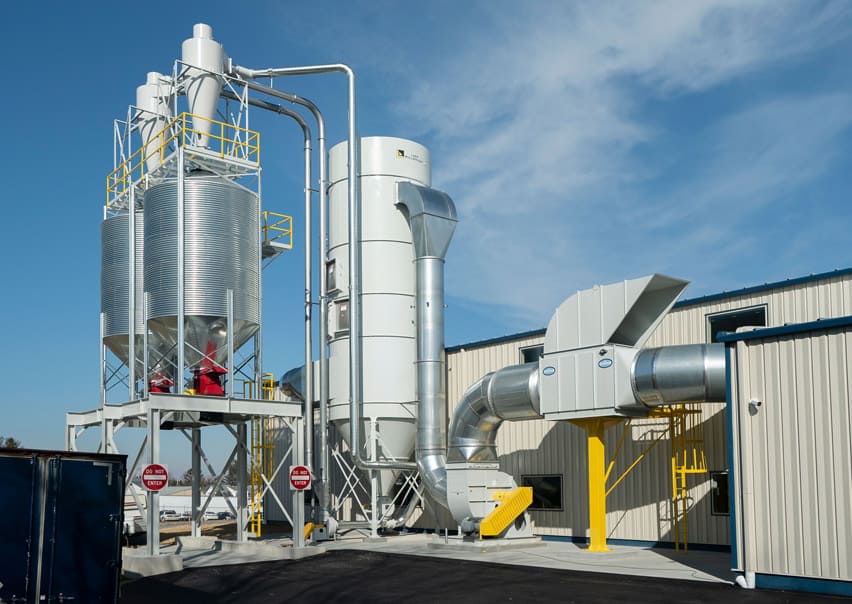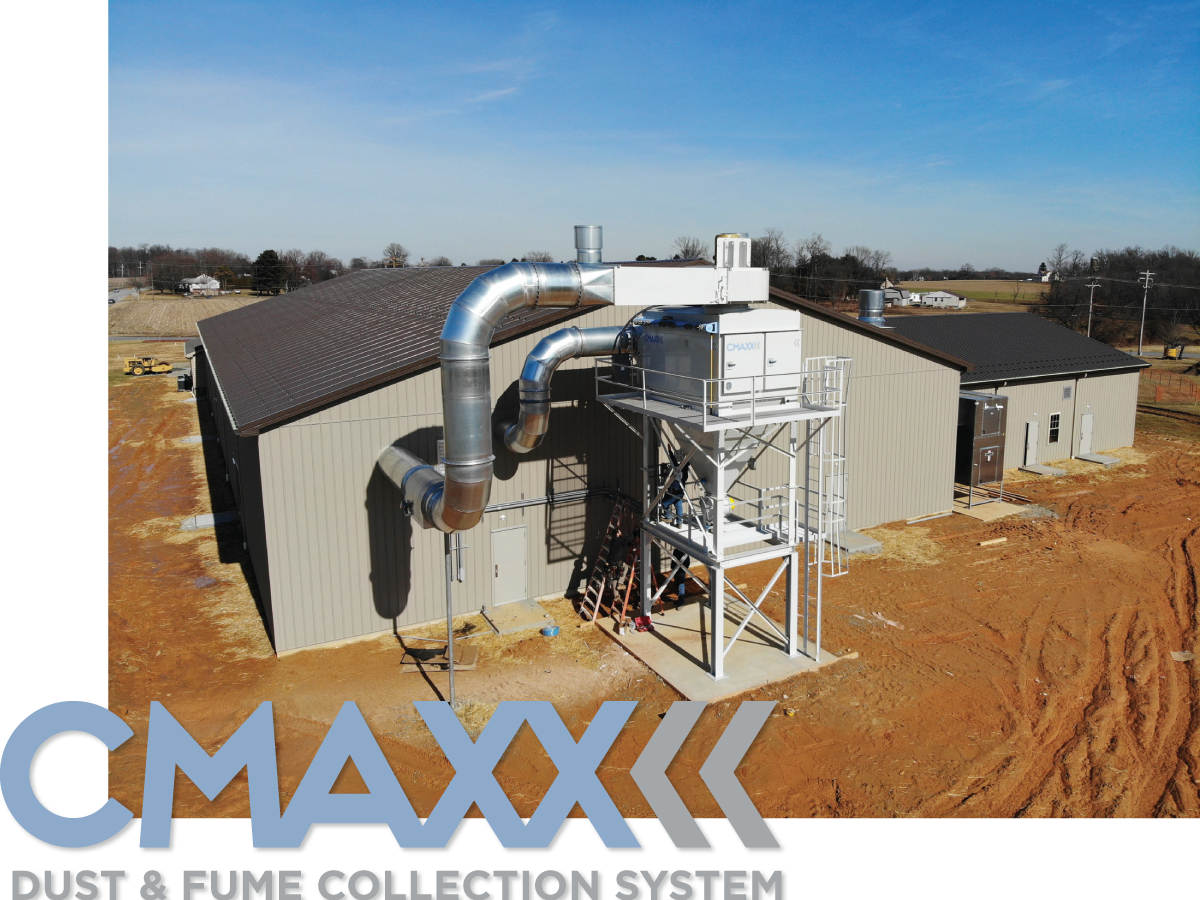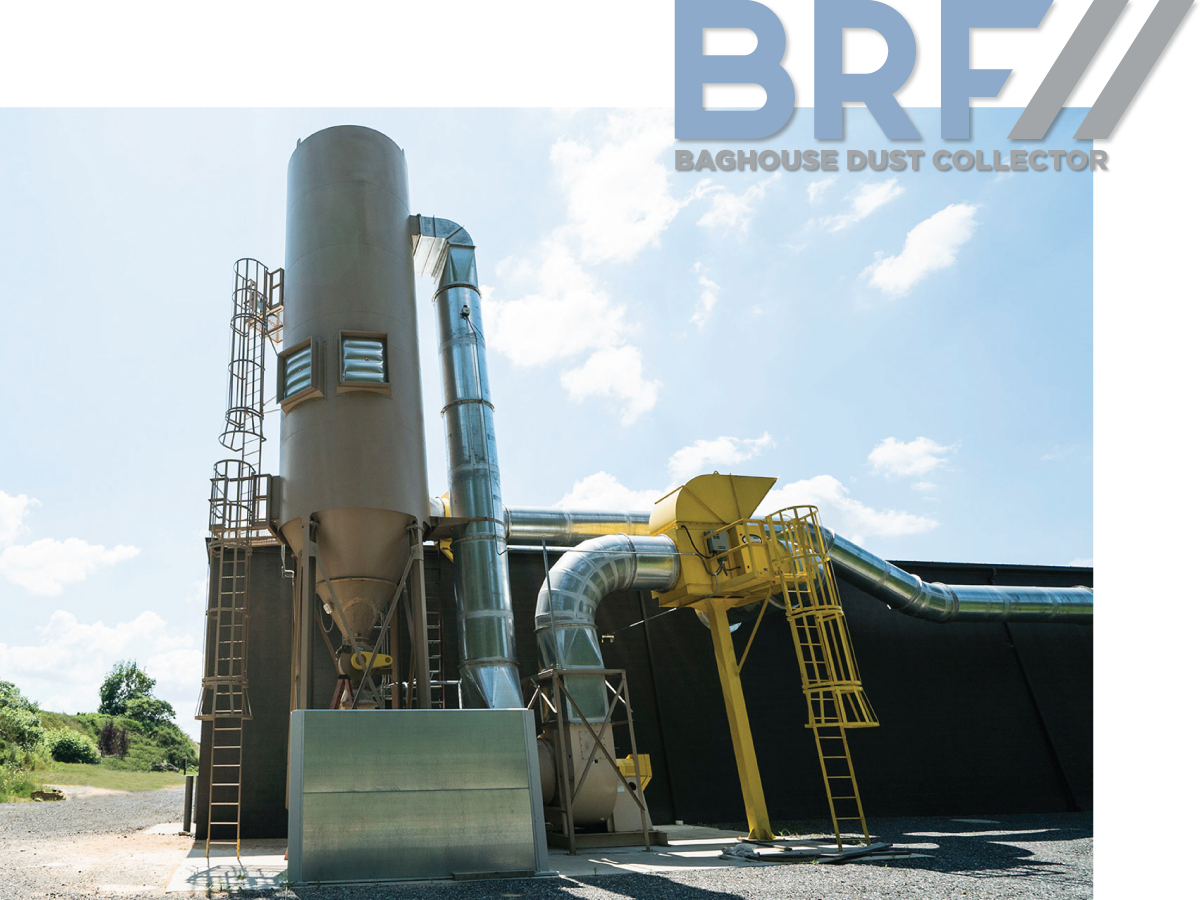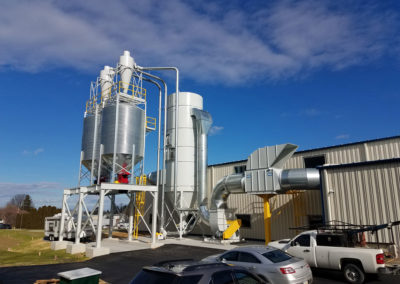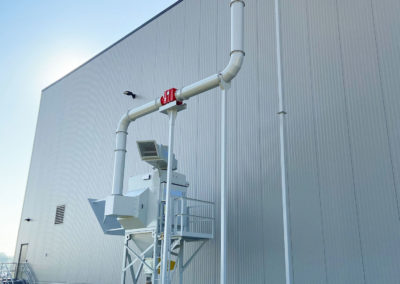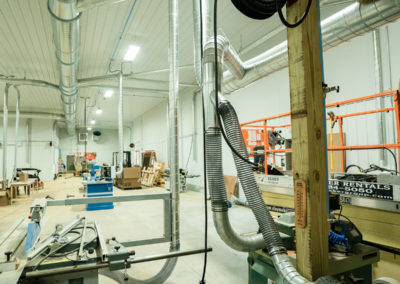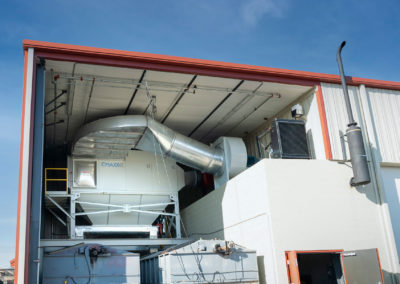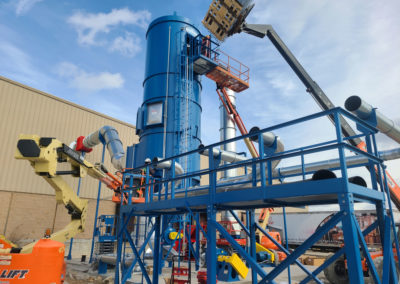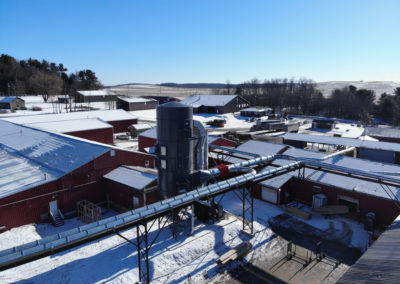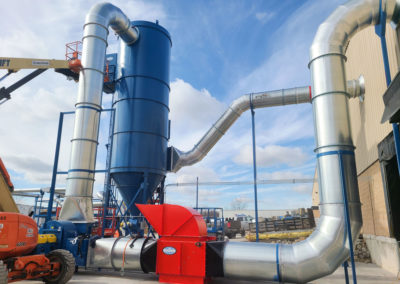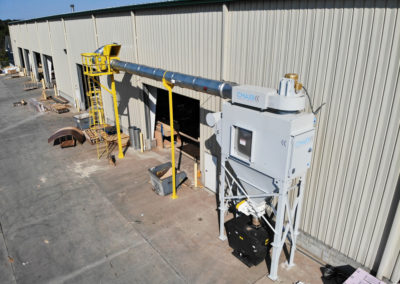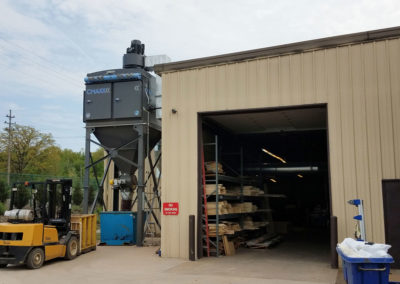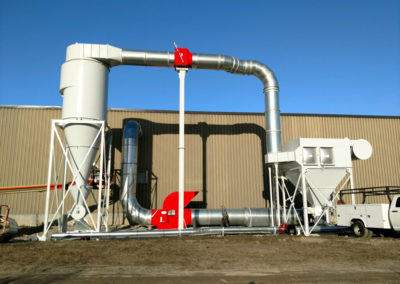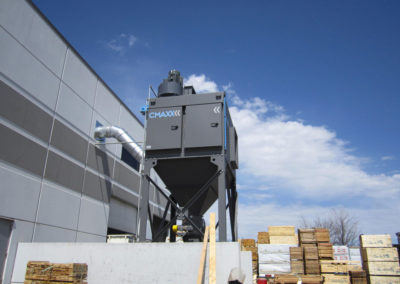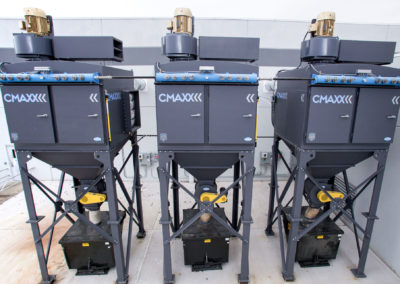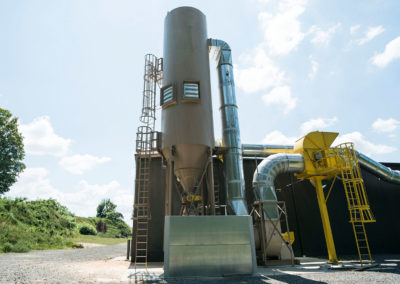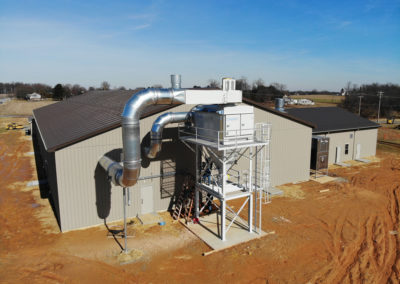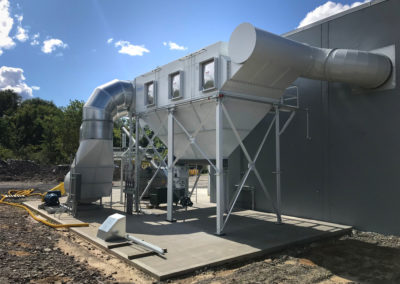Industrial Woodworking Dust Collection
The woodworking industry includes many different processes and types of dust. It’s machinery typically produces large amounts of dust. So, it’s critical that the right woodworking dust collection system be expertly selected and sized. Additionally, sawdust and wood particles are extremely combustible, so industrial dust collection for woodworking must have solid fire and explosion protection.
Further, industrial woodworking produces particles of different sizes, from chunks of wood to very fine powder. A dust collection system can be designed to separate these different types of material for better efficiency.
Woodworking dust collection applications often include:
Lumber & Sawmills
Cabinet Making
Particle Board Manufacturing
Wood Pallet Production
Biomass
Flooring Manufacturers
Furniture Manufacturers
Industrial Woodworking Dust Collection Safety
According to Dust Safety Science, wood dust caused more than a quarter of all combustible dust accidents in 2018. The dangers of sawdust are often underestimated. In many facilities, dust accumulation around the woodworking machinery leads to destructive fires. Wood dust fires travel at high speed and can ignite larger explosions.
Woodworking dust collectors protect people from injury. They also protect companies from OSHA fines, which will be especially high if there is a combustible dust incident.
Many competitors will recommend baghouses for all woodworking applications. However, Imperial Systems has also installed CMAXX cartridge collectors on these applications with great success. CMAXX collectors often out-perform baghouses for many of our woodworking customers. The CMAXX has advantages over a baghouse including easier maintenance and more compact size. Industrial systems should be designed for each company’s type of dust and woodworking machinery.
Cyclone
If your woodworking application produces larger chunks of wood as well as finer dust, a cyclone might be helpful. The purpose of a cyclone is essentially to sort the larger material before it enters the cartridge or baghouse unit. A cyclone will drop out the heavier material and allow the finer dust to continue on to the dust collector.
Chemical Suppression System
When a pressure spike indicating an explosion is detected, this system quickly disperses an explosion suppressant to keep the deflagration isolated inside the unit. This is a good option for when explosion venting is not a possibility based on the location and arrangement of the dust collector.
Abort Gate
An Abort Gate is typically situated on the return air side of the dust collector and diverts clean air, sparks, and fumes. An Abort Gate can also be trigged by a spark detector or broken bag detector, preventing harmful material like fire and smoke from entering the building.
Explosion Venting
Explosion venting ensures that, in the unlikely event that a deflagration occurs in a dust collector, the built up pressure inside the vessel has a way to escape. Proper venting allows the event to diffuse instead of escalating into a more dangerous problem.
Spark Detection & Extinguishment
This system is installed on the ductwork and detects any sparks that are present in the duct. Once detected, sparks are extinguished downstream before they can continue on and cause further damage to equipment or reenter the facility.
Explosion Isolation Valve
This system is installed on the ductwork and detects any sparks that are present in the duct. Once detected, sparks are extinguished downstream before they can continue on and cause further damage to equipment or reenter the facility.
Airlock
Our Airlocks maintain a consistent seal at the outlet of the dust collector while allowing material to continuously pass through. This seal also allows discarded material to be properly discharged, and prevents it from returning to the dust collector.
Hoods & Manifolds
Hoods and manifolds ensure that dust is being properly collected from each part of the machine producing dust. Duct design plays a large roll in the efficiency of the dust collection system, and our team has spent years striking the perfect balance between efficiency and precision.
VFD Drive
A variable frequency drive (VFD) automatically adjusts airflow as the differential pressure rises and there is a need for more suction to properly clean the filters. Without a VFD, more maintenance time is needed in checking the differential pressure and adjusting the slide gate or fan damper manually.
